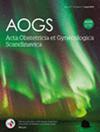Menstrual-related symptoms as red flags for school absenteeism among Norwegian adolescents (MINA): A cross-sectional study
Abstract
Introduction
Severe dysmenorrhea is prevalent among adolescents, yet it remains undertreated, potentially leading to substantial absenteeism from social and academic activities. This study aimed to evaluate the prevalence of severe dysmenorrhea among Norwegian adolescents, as well as associations between severe dysmenorrhea and academic or social absenteeism. Moreover, the study sought to assess the prevalence of accompanying symptoms and their potential as red flags for absenteeism, thus providing healthcare workers a more robust tool for identifying students for intensified treatment and/or referral. Furthermore, differences in the prevalence of severe dysmenorrhea, accompanying symptoms, and absenteeism based on ethnicity and place of residence were evaluated.
Material and Methods
This cross-sectional study utilized a digital questionnaire comprising 67 questions divided into three categories: “demographics,” “dysmenorrhea-related complaints,” and “consequences and actions related to complaints.” Data were analyzed using Chi-square tests and a multivariate logistic regression model.
Results
A total of 987 high school students completed the questionnaire and were included in the final analyses. Of them, 38.1% had scores of ≥8 on the Numeric Rating Scale, classified as severe dysmenorrhea. Participants with severe dysmenorrhea reported a significantly higher degree of absenteeism from both school (85.0% vs. 53.1%, p < 0.001) and social settings (84.3% vs. 53.9%, p < 0.001) than those with mild-to-moderate dysmenorrhea. Menorrhagia (odds ratio [OR] = 1.55, p = 0.012), dyschezia (OR = 1.63, p = 0.007), vomiting (OR = 1.97, p = 0.009), and fatigue (OR = 1.97, p = 0.026) were significant predictors of academic absenteeism in a logistic regression analysis. These can serve as relevant red flags for caretakers. Higher rates of social (74.4% vs. 57.0%, p < 0.001) and academic absenteeism (72.9% vs. 57.5%, p < 0.001) due to dysmenorrhea were observed among participants of non-Norwegian ethnicity.
Conclusions
A high prevalence of severe dysmenorrhea and associated symptoms was observed among Norwegian adolescents, leading to a high degree of absenteeism from school and social activities. The highest prevalence of absenteeism was observed among participants of non-Norwegian ethnicity. Symptoms accompanying severe dysmenorrhea should serve as red flags for healthcare professionals caring for adolescents.


 求助内容:
求助内容: 应助结果提醒方式:
应助结果提醒方式:


